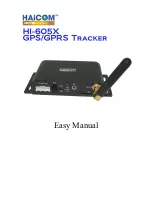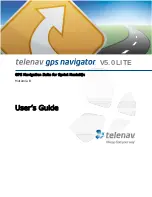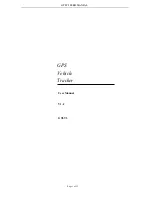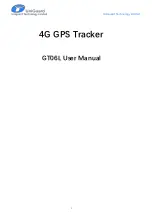
SXBlue II GPS Series Technical Reference Manual
21
1.4.3 GIS Field Data Collection and Datum Considerations
For optimal performance and results of field data collection, proper configuration of the field
software and some common GPS guidelines are essential when using the SXBlue II GPS.
1.4.3.1 Generic Field Data Collection Software Configuration
•
The software that will be used for collecting GPS data should accept
standard NMEA
messages
. As mentioned in section 1.3.1, the SXBlue II GPS outputs by default five
NMEA sentences: GGA, GSA, GSV, VTG and ZDA all at 1Hz (once every second) on all
three communication ports (Bluetooth, USB and Serial). Refer to chapters 3 and 4 for
more information on the NMEA messages format.
•
To communicate with the SXBlue II GPS via its Serial or USB port,
a baud rate of 9600
must be set in the communicating software. To set the baud rate to higher values on
these two ports, refer to Chapter 4 for sending commands to the SXBlue II GPS.
•
The coordinates output by the SXBlue II GPS follow the differential correction source
datum. You should make sure that your data collection software is up-to-date, supports
and applies the proper transforms to GPS data it receives to match your existing map
data.
-
When not using differential correction, the output coordinates from the SXBlue II
GPS are in the
current GPS WGS84 (G1150) datum
(note that there have been
many evolutions of the WGS84 datum over the years and the current revision differs
greatly from the original one).
-
When using SBAS, the coordinates will be in ITRF 2000 current epoch.
-
When using the SXBlue II-L GPS with an OmniStar subscription, the datum will be in
NAD 83 Original in North America and in ITRF 2000 elsewhere in the world
-
When using the SXBlue II-B GPS, the datum will depend on the reference frame of
the local DGPS Radio Beacon network.
•
Masks and filters
are very useful features of field data collection software and prevent
recording of poor GPS data. HDOP or PDOP limits should be set to proper values to suit
the application (accuracy vs. productivity). A “3D only” mode is useful for optimal
accuracy but an “Allow 2D Mode” can be very convenient in some forestry applications.
If a “DGPS Only” mode is available, we strongly suggest that it be used.
1.4.3.2 General Guidelines for GIS Field Data Collection
•
Proper antenna location
is critical for sub-meter positioning. The best location for a
GPS antenna is above the head with no obstruction of the sky. A soft hat for the
precision antenna is supplied with the SXBlue II and II-L GPS packages. In the case
where the use of a security hardhat is a must, the antenna can be mounted inside or
outside the hat with Velcro type material. For applications with a survey or backpack
range pole, an optional mounting plate with standard 5/8”-11 thread is available for the
precision antenna (contact your dealer for more information). When less accuracy is
needed, the antenna can be shoulder-mounted (ex. on a cruising vest for some forestry
work). The Micro-B antenna for the SXBlue II-B GPS features a 5/8”-11 thread.
















































